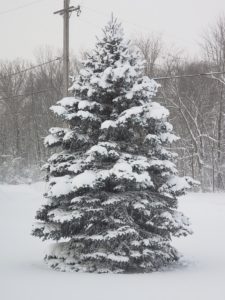
If you’ve ever experienced the power going out in your home, you understand how scary it can be. Especially during the winter, when cold temperatures could potentially cause you to need to find temporary shelter. Unless you have an alternative heating source! Having a wood burning fireplace, woodstove, or gas fireplace can provide you and your family the warmth you need to weather the storm, all while in the comfort of your own home. But it’s very important that your remember to use safe practices! Stay calm, stay safe, and follow these helpful tips. And always remember to make sure your system is reading to use before a situation like this arises by having it inspected by a certified chimney professional. Like us!
Wood Fireplaces and Woodstoves
First and foremost, make sure your chimney is clean and open the fireplace damper, which will keep smoke from filling the room. After ensuring everything is safe and ready to go, add the wood logs into the fireplace and add the kindling (twigs, bark, etc). Once the wood logs are properly arranged, light the kindling and continue to add logs when needed.
The best part about a wood fireplace is that it usually requires less fuel cost and provides a comforting feeling and sense of security during a power outage. Wood burning fireplaces and stoves also tend to be much easier to operate in the event of a power outage, as virtually nothing changes under these circumstances.
If the fireplace is not used regularly, it is recommended to always keep at least a 1/3 of a cord of wood on hand for emergency purposes. Be sure to store the wood in a dry location that is easily accessible for emergency use. As with any other circumstances, ensure that proper safety precautions are taken when operating wood fireplaces. Fireproof gloves are great to wear when adding more wood to the fire. And don’t forget a metal safety screen to prevent embers from potentially popping out and onto combustible materials.
Gas Fireplaces
Gas fireplaces have become a common fixture in many homes. While they require less accessories than a traditional wood fireplace, there are several essential items you will need to have.
- Functioning gas supply
- Properly operating remote or wall switch
- Lighter or matches for manually lit models
One of the most appealing reasons to choose a gas fireplace over a wood fireplace is the ease of use. Gas fireplaces are much easier to use and, in most cases, can be started by the touch of a button. However, it is important to have an understanding of which ignition type your gas fireplace has. There are two primary gas fireplace primary ignition types, millivolt and electronic ignition, and here is a guide on how to operate each one, along with important voltage information as well:
- Millivolt appliances utilize what is known as a standing pilot to heat a thermal generator, also known as a thermocouple. The small amount of voltage generated by the thermocouple is all that is needed to power the gas valve in the appliance. A simple switch or a remote control will close the power circuit in the gas valve, allowing the unit to ignite and provide needed heat during a power outage.
- Electronic ignition appliances use either a 12 volt DC or 120 volt AC power source to control an ignition board or ignition control module. These systems don’t have a standing pilot, but instead use a pilot that only ignites when the unit is performing the startup sequence. Battery powered models require no outside power at all and almost all models that normally require utility power will also have a battery backup. The holder for the batteries can often be found underneath the fireplace, after removing the front trim plate.
Proper Safety Techniques for Both Wood and Gas Fireplaces
For both wood and gas fireplaces, it is important to regularly check the fireplace for proper operation throughout the year. Also, do not wait until the fireplace or stove is needed to discover that there is a problem. Check the fireplace flue to ensure there are no blockages or dangerous levels of creosote.
In the event that the fireplace is a vent free gas model, it is recommended to cycle the fireplace on and off only as needed since continuous use can lead to the unit shutting down due to oxygen depletion in the room. If a portable generator is available to supply limited power, consider using it to power any accessory blowers that your gas or wood burning appliance may contain. This will allow the warmth provided to extend further into the home. Box fans can also be used to increase circulation of the warm air.
If you have a large home, or the power has been out for an extended period of time, it is recommended to set up temporary sleeping accomodations in the same room as your alternative heat source.
